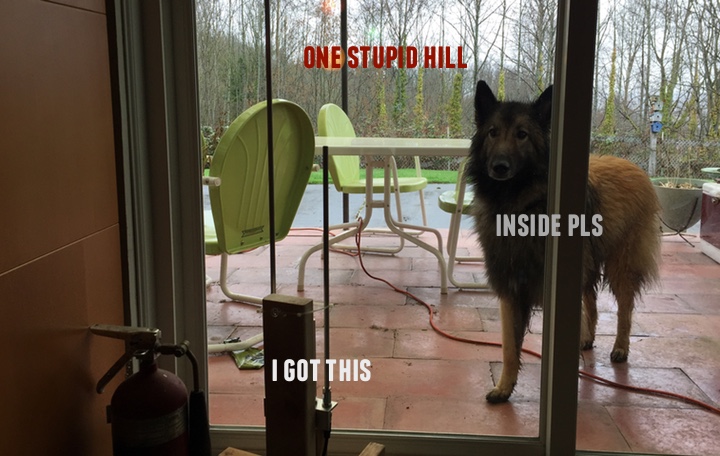

First Contact, and oh, hey, DMR
First Contact
After lurking on the WW7PSR repeater for the better part of a month, it was time for action. I rigged up a stand for the K9JEB antenna I scored last weekend, hooked it up to a new Yaesu FT-60R, and finally punched through that stupid hill between me and the repeater. They said I sounded fine, and I hadn’t even mounted it high or moved the metal patio furniture out of the way. I’m looking forward to seeing what I’ll be able to reach once I figure out a permanent mounting solution.
 Contrary to appearances, no dogs were neglected in the making of this shot.
Contrary to appearances, no dogs were neglected in the making of this shot.
DMR
When I took my test last month, the examiners sent me home with a flyer listing some local ham resources and ideas for starter radios. One of the suggestions was for a DMR radio called the Tytera (TYT) MD-380, which can be re-flashed with open source firmware (sweet), and can be had for just over a hundred bucks (also sweet).
So what is DMR anyway?
Turns out this is a pretty interesting mode. Unlike analog, you can’t just talk directly to another operator’s radio. All traffic goes through repeaters, and all the repeaters are connected to each other through the internet. Each repeater supports a set of chat rooms (“talkgroups”), which can cover just the one repeater (say, Cougar Mountain), a whole region (say, the whole Pacific Northwest), or even the entire world.
So I got my radio, signed up for a DMR ID, and started configuring everything. This part is surprisingly hard, and I think it’s a documentation problem. The local DMR group has detailed instructions, but they’re all written with the assumption that the reader has a solid grasp of the fundamentals. There’s a document called a new user’s guide, but it drives straight into the weeds from the first tee box…
The 27.5-ms frame consists of a total of 264-bits; 108-bit payload, 48-bit SYNC or embedded signaling, and a second 108-bit payload for a total of 216-bits of payload per frame. The vocoder must compress 60-ms of audio with FEC (forward error correction) into 216-bits of data for transmission. The 2.5ms-gap is used for guard time to allow PA ramping and propagation delay.
…which is great and all, but it doesn’t get me any closer to setting up my radio. Introductory computer programming books typically start with a “Hello World” example, which shows you how to write the minimum possible program that any layperson could understand in a minute or two, and then proceed step by step through the more advanced concepts. There’s no “Hello Repeater” in DMR, at least not one I could find.
So I’ve picked up a new side-quest, which is to make such a guide. I think I’ve figured it out, as I’m copying traffic, and even caught a conversation between someone here in Seattle and someone else in Virginia. But there are still some potentially serious gotchas I want to work through before I put out simple-and-definitive-sounding-but-wrong information. That would be worse than nothing at all.
73 @ki7tns
